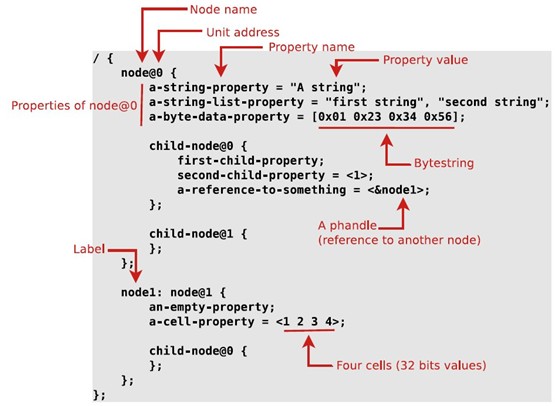1 Device Tree Description
A Device Tree (DT) is a hierarchical data structure used to describe hardware devices and their relationships in a Linux-based system. It provides a clear and concise representation of device configurations, facilitating device initialization and management by the kernel.
The Embedded Power Architecture™ Platform Requirements (ePAPR) specify that the DT is a tree-like structure where nodes represent the physical devices in a system. Each node can have child nodes, creating a parent-child relationship that reflects the physical or logical connection between devices. This hierarchical organization enhances the readability and maintainability of device configurations.
The following figure is a representation of a simple device tree describing the platform type and the parent and child nodes. Nodes are organized in a hierarchy as a collection of property and value tokens. Sub-nodes define the device relationships within the hierarchy.

The following figure depicts the device tree hierarchy for the SAM9X60 Device Tree Source Include (.dtsi) file. This hierarchy details the CPU, memory, clock configurations and memory mappings as outlined in the Memory Mapping section of the SAM9X60 data sheet (see References).
